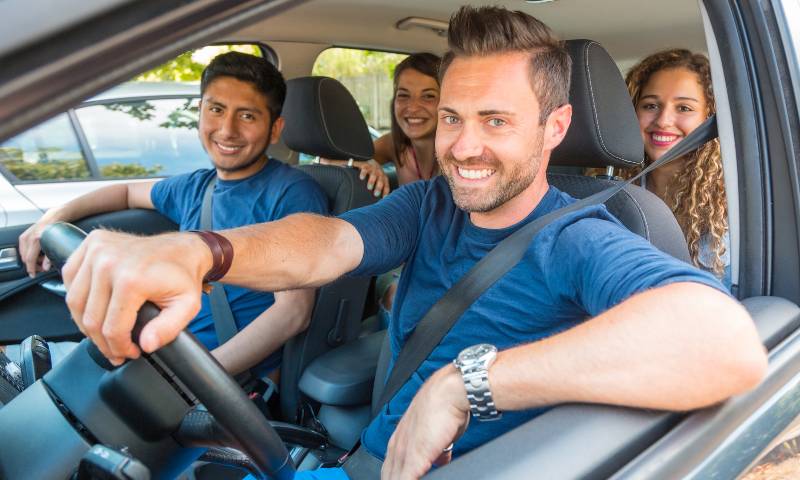As a rideshare driver, having car insurance coverage is essential. And it’s important to have coverage to ensure your safety and the safety of others while driving. While companies such as Uber and Lyft provide insurance for their drivers, certain conditions apply. It’s advisable to have personal insurance that covers you when you’re not working and also to supplement any gaps that Uber and Lyft coverage doesn’t include.
In this article we’ll cover some essential information to help you avoid any potential problems in the future.
There are three phases that occur while using a rideshare app:
- Available: This is when the driver is ready and waiting to pick up a passenger.
- En route: The driver has accepted a ride request and is coming to pick up the passenger.
- On the trip: The driver has picked up the passenger and is en route to their destination.
Here is a breakdown of the three driving periods and what Uber and Lyft cover.
Uber drivers
When the app is on, waiting for a ride request:
- $50,000 in bodily injury coverage per person
- $100,000 in bodily injury coverage per accident
- $25,000 in property damage coverage per accident
When the app is on, heading to pick up a passenger:
- $1 million third-party liability coverage
- Uninsured/underinsured motorist bodily injury coverage
- Contingent comprehensive and collision coverage up to the actual cash value of the car with a $1,000 deductible
When the app is on, the passenger is picked up; driving to the passenger’s destination:
- $1 million liability coverage
- Uninsured/underinsured motorist bodily injury coverage
- Contingent comprehensive and collision coverage; up to the actual cash value of the car with a $1,000 deductible
Lyft drivers
When the app is on, waiting for a ride request:
- $50,000 in bodily injury coverage per person
- $100,000 in bodily injury coverage per accident
- $25,000 in property damage coverage per accident
When the app is on, heading to pick up a passenger:
- $1 million liability coverage
- Uninsured/underinsured motorist bodily injury and/or first-party coverage
- Contingent comprehensive and collision coverage up to the actual cash value of the car with a $2,500 deductible
When the app is on, the passenger is picked up; driving to the passenger’s destination:
- $1 million liability coverage
- Uninsured/underinsured motorist bodily injury coverage
- Contingent comprehensive and collision coverage; up to the actual cash value of the car with a $2,500 deductible
Uber and Lyft provide their drivers with liability coverage, up to 1 million dollars. However, if you intend to drive for personal use, you still need to have private insurance to be eligible to receive Comprehensive and Collision coverage through them. Many major insurance companies are now beginning to offer hybrid plans, specifically tailored to rideshare drivers.
Utilizing the insightful details provided, one can take necessary measures to guarantee the protection of oneself, accompanying passengers, and the vehicle being operated.
Article by
Ava Collins
Content Writer and Researcher


